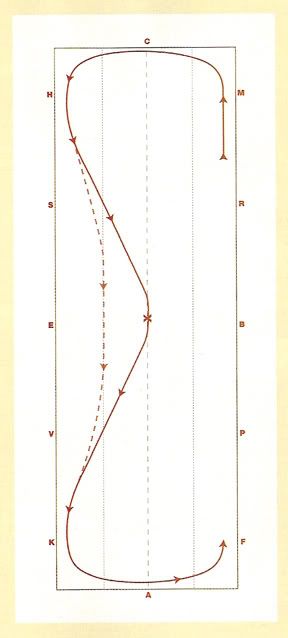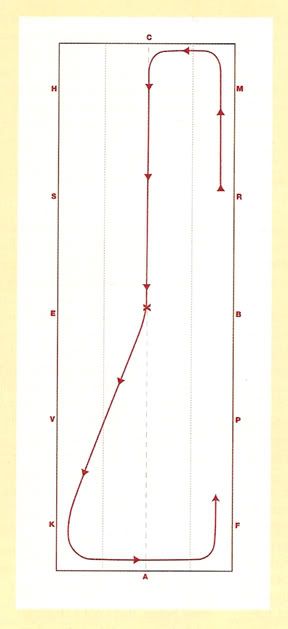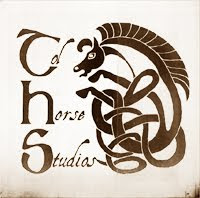Ride like a jockey
Quiet ride this afternoon. Should I be saying yesterday afternoon? It is 12:48am, after all...Oh well. It's still "today" to me... ;)
The weather was charging with a cool front coming in, so Toler and I were both pretty wound up. I decided to chance the possibility of rain and ride outside, specifically because it was so awesome out. Note: I LOVE storms. Toler and I couldn't resist some jumping, but I was too lazy to reset any of the jump heights, so the lines on the rails were hardly over 1'8", and the first jump of each diagonal was 2'3" and the second of each diagonal was 2'6." He was pretty good, though, and only knocked down one of the 2'6" because it didn't look much bigger to him and he wouldn't listen to my insisting that it *was* bigger. Oh well. He has a hard time getting the striding on the approaches after turns when we go his bad direction, mostly because he tries to drop his shoulder and stick his hip out so he doesn't have to use his butt. So we worked a bit on that.
And then silly me decided that I'm annoyingly out of shape in my two-point. Can't say that I'm all that surprised seeing how little consistent jumping work I've done since our jumping accident. It got me thinking about how awesome I used to be. Let me tell you, I was a fencer for about four and half years (as in, swords, not the constructed kind). Fencers have thighs of steel. Which was great because being away for college meant that I wasn't completely losing my riding form. At least I had fencing to keep my thighs tight.
So there's this exercise (read: method of torture) to really crank up two-point endurance. A friend at the stable learned it while working with David O'Conner at university (equine sciences). It has thus been dubbed "The O'Conner Exercise" at our barn, but I don't know what anyone else calls it. Essentially, you either raise your stirrups to the highest hole or raise them to the highest hole and then put your feet in the leathers on top of the stirrup iron, depending on how high your leathers run. I much prefer using the stirrup irons because it's hard to get your feet out of the leathers quickly should such action be required.
Here's where every rider's childhood dream of being a jockey comes true. You ride at the two-point, preferably on a horse who can just go around and around without fuss. And let me tell you, if your two-point is out of shape, you'll know it immediately. And possibly won't be able to walk for the next day and a half. It is *intense.* Even twice around the arena at a trot and canter both directions--What? Two minutes total?--made me feel like gelatin. When I was in shape, I could do the O'Conner exercise for at least ten-fifteen minutes. Straight. Ideally you should be able to do this for fifteen minutes while out on a hack over hills. Especially if you're an eventer.
So, needless to say my thighs are killing me right now. Tomorrow will be a "spoil the spoiled" day, I think. Brushing, braiding, a little massage, and some chilling out by the long grass. It'll be nice. And O'Conner-exercise-free. XD






